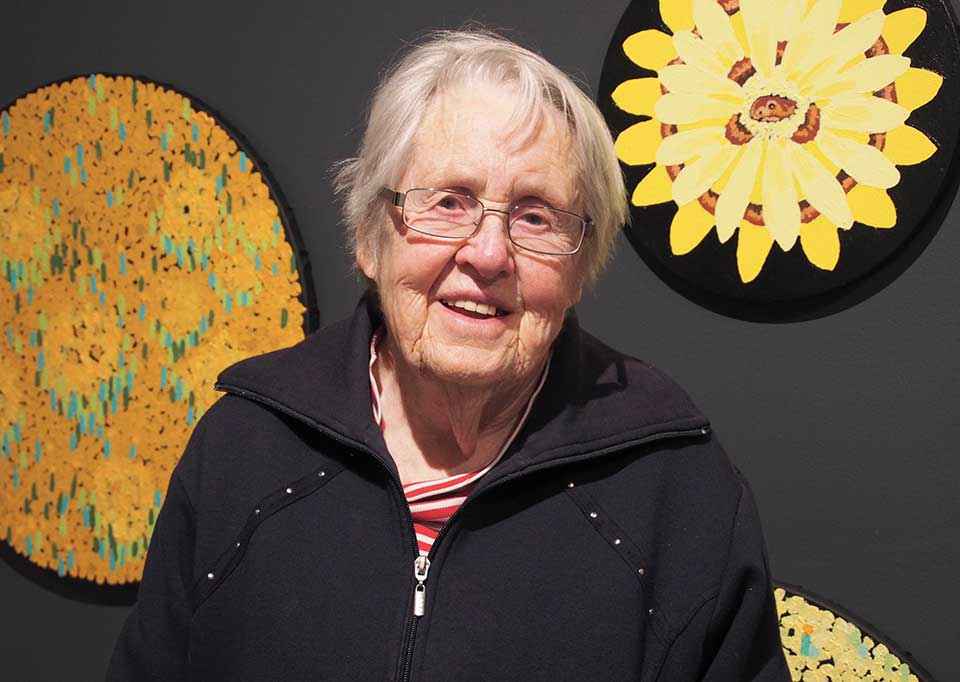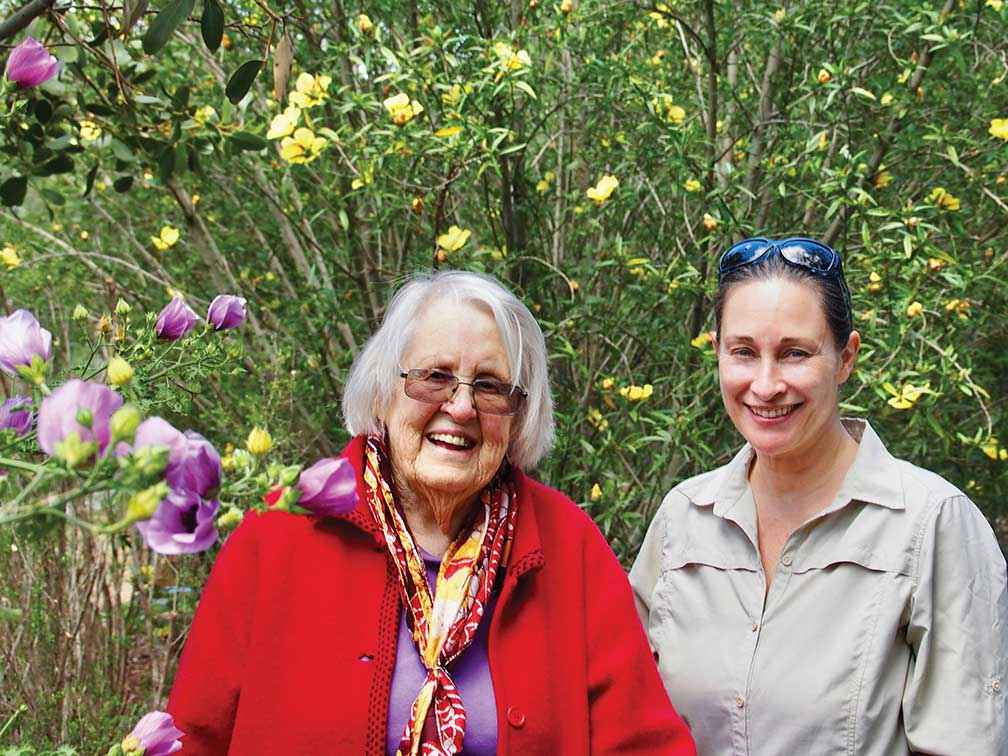Victorian Landcare Magazine - Spring 2022, Issue 85

Dr Beth Gott AM, ethnobotanist and researcher, died in Melbourne recently, a few weeks short of her 100th birthday.
Beth dedicated her life to the study of Australian flora. The co-author of Koorie Plants, Koorie People (1992), she contributed enormously to documenting and preserving knowledge about south-eastern Australian plants and their traditional uses for medicinal, food and fibre purposes.
Held in high esteem by Aboriginal people and respectfully referred to as Auntie by many, Beth also inspired generations of botany students and land managers.
During her long career teaching at Monash University, she created an Aboriginal garden of 150 native plant species, which continues as a living classroom and legacy.
Artist and horticulturist, Penny Algar, from the Strathbogie Ranges Conservation Management Network (SRCMN), first met Beth when visiting Monash University’s Aboriginal garden.
“I realised Beth’s comprehension of cultural plants went beyond nutrition and medicine when Beth excitedly explained that the plant they were looking at was used by Aboriginal people in children’s play,” Penny said.
In 2013, at age 91, Beth spoke at a bush tucker event in Euroa hosted by SRCMN and the Euroa Arboretum. The venue was full to capacity and many Aboriginal people travelled long distances to pay their respects to Beth.
According to Dean Stewart, a proud Wemba Wemba and Wergaia man, cultural and ecological educator, and principal consultant on the Monash University’s Gardens Revitalisation project, Beth contributed to a renaissance of Victorian Aboriginal culture and connections.

Above: Dr Beth Gott in the Aboriginal Garden at Monash University with Tess Holderness, who is researching Beth’s life and work.
“For me, Beth has been the true idea of an Elder – a holder of deep knowledge and wisdom, and a holder of deep humility and honour. A great sharer of that knowledge – not a keeper. Beth worked at the intersection between academic botanical understanding and traditional First Nations knowledge – merging the two, with both being enriched and strengthened by the other.
“Beth’s work helped me create the Aboriginal Heritage Walks in the Royal Botanic Gardens in Melbourne in the late 1990s, a cultural experience that still continues today. Like all the best Elders, no matter what culture, no matter what country, for those rare Elders, their legacy lives on and on, nurturing generations,” Dean said.
Beth’s research, in identifying the use of tubers as one of the most important food sources for Aboriginal people, brought knowledge of the Aboriginal food economy into the public eye. Biologist and researcher Tess Holderness sees Beth as a quiet achiever and a woman ahead of her time.
“Beth simply got on with the work she regarded as important. Just ‘following her nose,’ as she would say, delving into the archives and historical records, conducting field work and respectfully consulting with Aboriginal people. Describing not just the uses of the plants from a botanical perspective but also the deeper relationships between First Nations people and nature, the impact of her life’s work will continue for decades to come,” Tess said.
Cathy Olive is Executive Officer at the Euroa Arboretum. Bev Dick is a committee member of the Rubicon Forest Protection Group.
For more information about Beth’s life and work go to www.monash.edu and search for Dr Beth Gott. Tess Holderness is keen to hear from people who have been informed, influenced or inspired by Beth’s work. Please email tessholderness@gmail.com